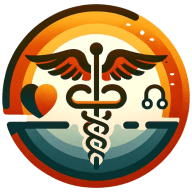The healthcare industry is a complex ecosystem where efficiency and accuracy are paramount. One key aspect that can significantly impact the effectiveness of healthcare delivery is clinical workflow optimization. This blog post will delve into the intricacies of clinical workflow optimization, its importance, and how it can revolutionize healthcare services. We will explore strategies for optimizing clinical workflows and the potential benefits that healthcare institutions can reap from these improvements.
Understanding Clinical Workflow Optimization
Clinical workflow optimization refers to the process of enhancing the sequence of tasks involved in healthcare delivery. It aims to streamline operations, reduce inefficiencies, and improve patient outcomes. The process involves analyzing current workflows, identifying bottlenecks, and implementing changes to improve efficiency and effectiveness.
Clinical workflow optimization is not a one-size-fits-all process. It requires a deep understanding of the unique needs and challenges of each healthcare institution. It also involves a continuous process of evaluation and improvement to ensure that the workflows remain effective and efficient.
The importance of clinical workflow optimization cannot be overstated. It can lead to significant improvements in patient care, reduce healthcare costs, and improve the overall efficiency of healthcare institutions. By streamlining workflows, healthcare providers can focus more on patient care and less on administrative tasks.
The Role of Technology in Clinical Workflow Optimization
Technology plays a crucial role in clinical workflow optimization. Electronic Health Records (EHRs), for instance, have revolutionized the way healthcare providers manage patient information. They have eliminated the need for paper records, making it easier to access and share patient information.
Moreover, advanced analytics tools can help healthcare providers analyze large volumes of data to identify trends and patterns. These insights can be used to improve patient care and streamline workflows. For instance, predictive analytics can help healthcare providers anticipate patient needs and allocate resources more efficiently.
Telemedicine is another technology that has a significant impact on clinical workflow optimization. It allows healthcare providers to consult with patients remotely, reducing the need for physical appointments and freeing up resources.
Strategies for Clinical Workflow Optimization
Implementing clinical workflow optimization requires a strategic approach. Here are some strategies that healthcare institutions can adopt:
- Process Mapping: This involves creating a visual representation of the current workflow. It helps identify bottlenecks and areas for improvement.
- Stakeholder Engagement: It's crucial to involve all stakeholders in the optimization process. This includes doctors, nurses, administrative staff, and patients. Their input can provide valuable insights into the challenges and potential solutions.
- Continuous Evaluation: Workflow optimization is a continuous process. Regular evaluations can help identify areas for improvement and ensure that the workflows remain efficient and effective.
Challenges in Clinical Workflow Optimization
While clinical workflow optimization has numerous benefits, it's not without challenges. One of the main challenges is resistance to change. Healthcare providers may be hesitant to adopt new workflows, especially if they perceive them as more complex or time-consuming.
Another challenge is the lack of resources. Implementing new workflows often requires significant investment in technology and training. Healthcare institutions with limited resources may find it difficult to implement these changes.
Data privacy and security is another concern. With the increased use of technology, healthcare institutions must ensure that patient data is protected and compliant with regulations.
The Future of Clinical Workflow Optimization
The future of clinical workflow optimization is promising. With advancements in technology, healthcare institutions can expect to see even more improvements in their workflows.
Artificial Intelligence (AI) and Machine Learning (ML) are expected to play a significant role in this. They can help automate routine tasks, predict patient needs, and provide personalized care.
Moreover, the use of wearable devices and Internet of Things (IoT) can provide real-time data, which can be used to improve patient care and streamline workflows.
Conclusion
Clinical workflow optimization is a crucial aspect of healthcare delivery. It can lead to significant improvements in patient care, reduce healthcare costs, and improve the overall efficiency of healthcare institutions.
While there are challenges in implementing clinical workflow optimization, the benefits far outweigh the drawbacks. With the right strategies and the use of technology, healthcare institutions can streamline their workflows and provide better care for their patients.
Optimizing Clinical Workflows: A Path to Enhanced Healthcare Delivery
In conclusion, clinical workflow optimization is a transformative process that can revolutionize healthcare delivery. It requires a strategic approach, stakeholder engagement, and the use of technology. Despite the challenges, the potential benefits make it a worthwhile endeavor. As we look to the future, advancements in technology promise to bring even more improvements, making clinical workflow optimization an exciting field to watch.

